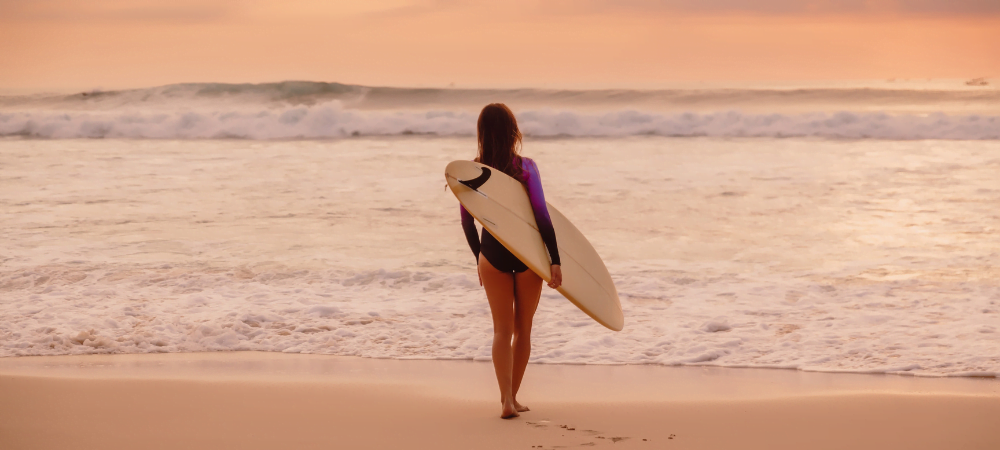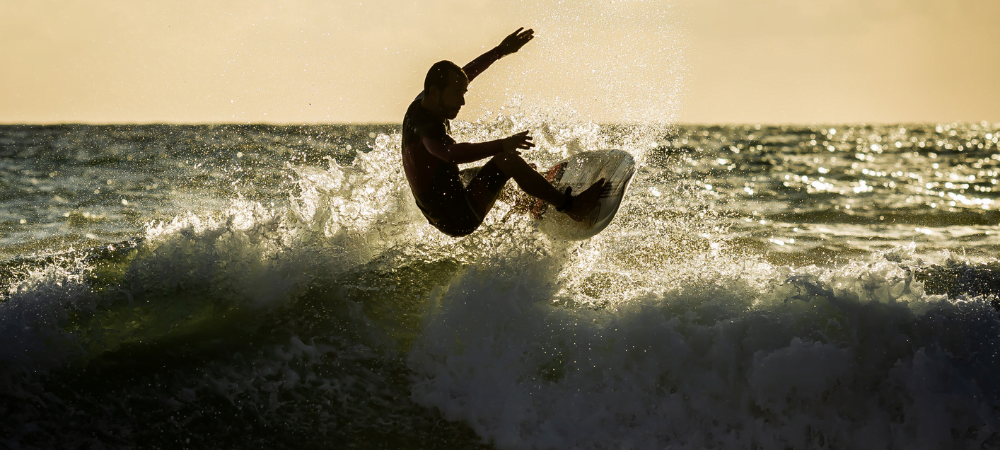A Guide to Surfing in Bali
Are you ready to catch some waves? Surfing in Bali is an experience you’ll never forget! Whether you’re a beginner or an experienced surfer, this tropical paradise has something for everyone. It’s no wonder why it’s become one of the most popular destinations for surfers around the world.
The island of Bali is known for its consistent surf conditions and great beaches. The warm, shallow waters make it perfect for those just starting out on their surfing journey. But don’t be fooled – there are plenty of challenges for more experienced surfers too!
If you are a beginner or here with family members who can use some practice, some of the best schools to learn surfing are located in Seminyak Beach, within walking distance from My Villas in Bali.
Where To Surf In Bali
That depends on your skill level and what kind of waves you’re looking for. For beginners who are just starting out, Kuta Beach or Seminyak Beach is ideal. Here, you’ll find gentler waves that are perfect for learning the basics of surfing.
Plus, there are plenty of instructors around, so you can get some help if needed. The nearby beach of Legian also provides calmer swells that make it easier for those just starting out to get comfortable on their boards.
Experienced surfers may want to take on more challenging waves like those at Uluwatu and Padang Padang. These spots offer powerful swells that will test your skills and push them even further. At these locations, you’ll also find a variety of other activities, such as snorkelling and cliff jumping, that add an extra element of excitement to your surfing adventure. (1)
What To Bring For A Day Of Surfing
Surfing in Bali is an activity that should not be taken lightly. To get the most out of your time in the water, it’s important to bring along the right supplies for your day of surfing. Here’s a quick rundown of what to bring.
First and foremost, you’ll need a surfboard – either rent one or bring your own. Don’t forget to bring a leash that attaches to your board, so you don’t lose it when you wipe out! Most people will want to wear a wetsuit and/or rash guard for protection from the sun and long exposure to the water. It’s also good practice to wear booties or reef shoes for extra traction.
Of course, there are other items you might want to consider bringing, such as a towel, sunscreen, hat, sunglasses, snacks and drinks. Sunscreen is essential, the rest can help make your experience more enjoyable.
How To Choose The Right Surfboard
Choosing the right surfboard is an essential part of preparing for a day of surfing and can make all the difference when it comes to having an enjoyable experience. It’s important to choose a board that matches your skill level, size, and style.
When selecting a surfboard, consider its width, length, thickness, volume, rocker profile, and fin setup. A wider board helps you stay stable on small waves and can help keep you afloat with bigger waves.
For beginners, longer boards are typically easier to ride. The thickness will affect your paddle speed, while volume influences the buoyancy of your board. The rocker profile affects how easily the board turns in the water, while fins provide drive and stability as you maneuver across the wave.
Take some time to research different types of boards or ask experienced surfers for advice before making a purchase. Most shops have demo boards available, so you can try them out in the water first-hand before committing to a purchase. Picking out the right board will ensure you have more fun in the water and progress faster as a surfer!
Preparing For The Waves
When it comes to surfing in Bali, preparation is key. Knowing what kind of waves you’ll be facing and how to handle them can help you stay safe and have a great time. In this section, we’ll go over what you need to do before tackling the waves.
First of all, take some time to research the area you’re planning on surfing in. Check out the type of waves that are common in that area, as well as the best times of day for surfing there. Doing this can give you an idea of what to expect when you get in the water – whether it’s big and choppy or small and gentle – so you can be prepared for whatever comes your way.
Make sure you have all the necessary gear with you before heading out. Bring a board suited to your skill level, a wetsuit if it’s cold outside, sun protection, and any other items that will help keep you safe while riding the waves. Once everything’s packed up and ready to go, it’s time to hit the beach!
Surfing is an exciting activity that takes some practice but can be incredibly rewarding once mastered. With proper preparation, there’s no limit to where your newfound skills could take you – so don’t forget to enjoy yourself along the way!
Safety Tips For Surfing In Bali
While the waves may be tempting, it’s essential to take the necessary steps to ensure your time in the water remains safe. Let’s explore some of these safety tips.
When you’re on the beach, keep an eye out for any warning signs or flags that may be posted on the beach. These signal potential dangers such as strong currents, riptides, and other hazardous conditions. Make sure you understand what each flag means so you can stay aware of your surroundings and make informed decisions about when it’s safe to go into the water.
Don’t forget about wearing proper equipment when you’re out surfing! Investing in a good quality wet suit and leash will keep you insulated against colder temperatures and help you stay afloat if you get knocked off your board by a wave. It’s also smart to bring along a buoy or life vest if conditions could become hazardous while you’re in the water.
Staying mindful of these safety tips will help ensure that your experience surfing in Bali is enjoyable and without any unfortunate incidents. Taking just a few extra precautions can make all the difference!
FAQ
When is the best time of year to surf in Bali?
Dry Season (April to October): Offers consistent, high-quality waves and is popular with tourists. Prime spots are on the western and southern coasts.
Wet Season (November to March): Features less consistent waves but fewer crowds. Eastern coast spots like Nusa Dua and Sanur can provide good conditions.
Choose based on your surfing preferences and tolerance for crowds! Always consult a detailed surf forecast before planning your trip.
Which beaches in Bali are recommended for beginner surfers?
Kuta Beach and Seminyak Beach are highly recommended for beginner surfers in Bali due to their gentler waves and availability of surfing schools and instructors. Legian Beach is also beginner-friendly, offering calmer swells and a supportive environment for new surfers to practice and learn.
Which beaches are suitable for experienced surfers seeking challenging waves?
Uluwatu and Padang Padang beaches are well-known among experienced surfers for their powerful and challenging swells, providing a thrilling surfing experience in Bali. These spots present advanced wave conditions and are globally recognized for hosting international surfing competitions.
- Welcome Back To My Villas in Bali - November 17, 2021





